Buying a hybrid isn’t as easy as you might think. They are definitely not all created equal, with some serving up outstanding fuel efficiency while others seem to offer barely any benefit at all.
That’s why we have conducted this comparison of three similar mid-sized SUVs with three very different hybrid systems.
We have the Mitsubishi Outlander Plug-in Hybrid in the Exceed Tourer grade, versus the Nissan X-Trail e-power in the Ti-L grade and the Toyota RAV4 Hybrid in the Cruiser grade.
I’ll point out right from the start that the RAV4 and the Outlander are both 2022 models, while the X-Trail is a 2023 version.
Yes, the global shortage of vehicles means even Toyota and Mitsubishi couldn’t supply us with the 2023 models. That’s fine, as the hybrid powertrains haven’t changed and that’s what we’re focussing on here.
This review also covers how much the SUVs cost and their features, plus their practicality points and safety equipment.
We have given a particular focus to what each is like to drive and how fuel efficient they are. To test this we drove the three SUVs in a convoy covering every type of road you probably will, from CBD traffic during peak hour and suburban back routes, to country roads and motorways.
Price and features – Do they represent good value for the price? What features do they come with?
I don’t want you to freak out with these prices. See, the three SUVs we compared all sit at the top of their model ranges, so they cost a lot.
If money is tight, the secret is to opt for the entry-grade hybrid versions, for thousands of dollars less.
Righto, with that said, let me introduce you to the Mitsubishi Outlander Exceed Tourer Plug-in Hybrid Electric Vehicle, which lists for $70,990, the Nissan X-Trail Ti-L e-power (we had the latest 2023 version) which lists for $57,190, and the RAV4 Hybrid, which in the Cruiser grade and front-wheel drive lists for $49,700.
The RAV4 and Outlander we tested were 2022 models, but the prices I have given you here are for the 2023 versions.
Coming standard on all three SUVs are LED headlights and running lights, roof rails and alloy wheels, privacy glass, a sunroof and a proximity key.
Inside they all have leather seats, wireless phone charging, built-in sat nav, and media systems with Apple CarPlay and Android Auto.
The Outlander and X-Trail have 12.3-inch displays, they also have head-up displays for speed and navigation, and a 12.3-inch driver display.
The RAV4 also has a 12.3-inch driver display, and a 10.5-inch media display, which is a larger screen than the one on our test car because it was added to the new 2023 model.
The front seats in the RAV4 are heated and ventilated, and while the X-Trail and Outlander don’t have ventilated seats they have front and second row seat heating.
In the 2023 update the Outlander was given heated rear seating, along with a heated steering wheel.
The RAV4 has dual-zone climate control, while the Outlander and X-Trail have three-zone systems.
The equipment level for all three cars is good, but it’s hard to go past the X-Trail for value.
Design – Is there anything interesting about their designs?
Our three SUVs have some shared exterior styling cues from the very similar tail-lights of the Outlander and RAV4, to shared design elements in the cabins of the Outlander and X-Trail.
Still, all three have distinct designs with the RAV4 coming off all angular and sporty, the Outlander looking large and luxurious and X-Trail seeming to have a modern and prestigious appearance.
Those design personalities are carried through into the cabins with the X-Trail feeling high-end, more so than the Outlander even though both are related and even share components thanks to their joint Renault-Nissan-Mitsubishi Alliance parentage.
The X-Trail is the youngest SUV here with this completely new version only arriving late in 2022.
The Outlander is new, too, but the model landed in 2021, while the RAV4 is getting on with the current generation having been on sale in Australia for nearly five years.
A new generation RAV4 is expected in 2025. Keep this in mind if you decide on buying one because the wait time on the current generation could be at least a year.
As for their dimensions the RAV4 is 4.6m long, 1.7m tall and 1.9m wide; the X-Trail is 4.7m long, 1.7m tall and 2.1m wide; while the Outlander is also 4.7m long, 1.7m tall and 1.9m wide.
Strangely, the Outlander looks bigger than the X-Trail even though the numbers say it isn’t. That Outlander also has an extra two seats. Let’s talk about that in the next section.
Practicality – How practical is their space and tech inside?
I have lived with all of these SUVs with my small family of four and can testify they all offer impressive practicality, but there are some differences in the way each offers space and storage.
The Outlander we tested was a seven seater, while the RAV4 and X-Trail were five seaters.
That said, the third row seats in the Outlander won’t accommodate adults comfortably, but are handy if you suddenly need to taxi an extra couple of children home.
As for second-row leg and headroom, the RAV4 wins here with the X-Trail and Outlander feeling as though their seats are too high and offering less space.
Car companies call this ‘theatre seating' and it’s very good for children and their outward visibility, but for tall apes like me it's like sitting on a perch.
The X-Trail stands out for its cabin storage with large door pockets, a floating centre console with a large stowage area underneath plus the widest opening rear doors I think I’ve ever seen.
As a parent with two small children, those wide opening doors make life so much easier when it comes to putting them into their car seats and taking them out again.
The Outlander is also remarkably practical with pull up sun shades for the rear windows, directional vents, climate control in the second row and two standard power points with a combined 1500W output to power appliances when camping.
As for the boots, the Outlander has a 478-litre cargo capacity with the third row folded flat, the X-Trail is about 100 litres bigger at 575 litres, but the RAV4 tops the lot at 580 litres.
Under the bonnet – What are the key stats for their engines and transmissions?
It’s a trap to assume all hybrids are the same. If you do fall for this assumption you run the risk of buying a hybrid that’s useless for fuel efficiency or impractical for you to own.
I’m happy to say you are safe with any of these three hybrids, but beware the Outlander will need to be recharged with a cable either at a public fast charger or through a regular household power point in your garage or in my case in my driveway.
So let’s start with the Outlander. As I said, this is a plug-in hybrid, the only one in our comparison, you might see this SUV referred to as the Outlander PHEV (Plug-in Hybrid Electric Vehicle).
.jpg)
The Outlander PHEV has two electric motors - one at the front making 80kW of power and one at the rear producing 100kW. This gives the Outlander PHEV its all-wheel drive ability.
There’s also a 2.4-litre four-cylinder petrol engine which makes 98kW/195Nm. The maximum combined output of the Outlander’s hybrid system is 185kW/450Nm.
The Outlander PHEV uses an automatic Continuously Variable Transmission (CVT).
.jpg)
A 20kW lithium ion battery runs under the Outlander's floor between the front and rear axles and when fully charged offers 84km of pure electric driving range, and will power the motors up to 70km/h.
While the Outlander’s hybrid system will avoid using petrol whenever possible, that engine can drive the front wheels when cruising at high speeds, like on the motorway. While doing this any excess power is used to charge the battery pack. Braking also charges the batteries.
The RAV4 Hybrid has a much simpler system that combines a 131kW/221Nm 2.5-litre four-cylinder petrol engine and an electric motor making 88kW/202Nm. The combined output of the engine and motor is 160kW.
.jpg)
We had the two-wheel drive RAV4 Hybrid which has the one motor but the all-wheel drive has a second motor at the rear.
The RAV4 Hybrid uses a Continuously Variable Transmission (CVT).
A 6.5Ah Nickel Metal Hydride battery is located under the floor near the rear seat and charging is done via the petrol engine or regenerative braking.
.jpg)
The latter means when you ease off the accelerator and start braking to slow down, the motor functions as an electrical generator, capturing the kinetic energy and sending it to the battery.
The X-Trail has a 1.5-litre three-cylinder turbo-petrol engine making 106kW/250Nm but its job is to generate electricity, sending DC charge to the 2.1kWh lithium-ion battery and/or AC charge direct to the inverter, which in turn powers two electric motors that turn the wheels.
The front motor has an output of 150kW/350Nm while the rear makes 100kW195Nm. The combined output is 157kW/525Nm.
| Outlander PHEV | X-Trail e-Power | RAV4 Hybrid |
| Petrol Engine | 2.4-litre 4-cylinder 98kW/195Nm | 1.5-litre 3-cylinder turbo 106kW/250Nm | 2.5-litre 4-cylinder 131kW/221Nm |
| Electric motor | Front motor 80kW Rear motor 100kW | Front motor 150kW/350Nm while Rear motor 100kW/195Nm. | Front motor 88kW/202Nm |
| Combined output | 185kW/450Nm | 157kW/525Nm | 160kW |
| Drivetrain | All-wheel drive | All-wheel drive | Front-wheel drive |
Efficiency – What is their fuel consumption? What is their driving range?
A hybrid vehicle needs to be fuel efficient - it’s the main reason for buying one. Otherwise what’s the point?
We put extra focus on fuel consumption in this hybrid comparison knowing that along with the performance of the powertrain it’s a deciding factor in which of these SUVs is the best hybrid vehicle.
To test fuel consumption we filled each of the SUVs’ petrol tanks and then drove a set route that was intentionally designed to start at peak hour on a weekday and progress through Sydney’s CBD, then out onto suburban streets, then motorways and finally roads through the bush. The total distance travelled was 140km.
.jpg)
The loop took three hours and we finished back at the petrol station we started at to fill up again and find out how much fuel each SUV used and from there calculate the consumption.
Toyota says the RAV4 Hybrid front-wheel drive will use 4.7L/100km, we measured 3.7L/100km at the pump after our test.
Nissan says the X-Trail e-power with all-wheel drive will use 6.1L/100km. Well, we came very close to this at 5.9L/100km.
.jpg)
Finally Mitsubishi reckons the Outlander will use 1.5L/100km and while this sounds impossible we measured 1.4L/100km at the end of our 140km route.
Of course the Outlander has an advantage - we started with a full charge and that gave us 84km of electric driving range - more than half the total distance of our route.
The catch to the Outlander is you really need to plug it in to charge the battery fully and get the best fuel economy.
.jpg)
My driveway has a regular powerpoint and that’s all I used to plug in the standard cable provided by Mitsubishi.
To charge from 0-100 per cent took just over eight hours which was fine because I did it before going to sleep and in the morning it was full. A fast charger will do it in about 40 minutes.
The X-Trail e-power and RAV4 Hybrid are not plug-in hybrids and there’s no way to charge the batteries other than to drive the cars when it’s done automatically.
| Outlander PHEV | X-Trail e-Power | RAV4 Hybrid | |
| Official consumption | 1.5L/100km | 6.1L/100km | 4.7L/100km |
| Real world test | 1.4L/100km | 5.9L/100km | 3.7L/100km |
| Charging | Plug-in hybrid | Engine/generator | Regen braking |
| Fuel tank size | 55L | 55L | 55L |
| Hybrid range | 850km-plus | 902km | 1170km |
Driving – What are they like to drive?
These three hybrid SUVs are very different from each other to drive. Let me take you through what I’ve found.
The RAV4 Hybrid feels most like a regular petrol SUV to pilot and if you’re apprehensive about switching to a hybrid then look no further - you get in and drive like you would any car.
The RAV4 turns on silently and at low speeds such as around car parks the motor powers you quietly, but accelerate harder, like you would from the traffic lights, and the petrol engine will join in.
The RAV4 is also the best to drive from a sporty perspective with great handling and a good feeling of connection to the road, all while being comfortable and composed.
The Outlander Plug-in Hybrid doesn’t feel as agile as the RAV4 nor as comfortable to drive, but it is a lot more composed than the petrol version of this same SUV and easy to pilot, despite feeling large.
The Outlander’s genius is in the way this SUV can operate almost always as a fully electric car with more than 80km of EV driving range providing smooth, silent travel with great acceleration from its two powerful electric motors. There’s zero range anxiety, too, as the petrol engine can switch to powering the motors when the charge in the battery drops too low.
I do like the driving position of the Outlander, it feels high and if you want that added feeling of being secure and big on the road then this SUV has the don’t-mess-with-me attitude you might be looking for.
Moving on, the X-Trail e-Power is probably the strangest hybrid I’ve driven, but also one of the most refined SUVs for this money I’ve met.
What’s strange is the X-Trail e-Power is a fully electric car that has a petrol engine with the sole purpose of acting as a generator for more electricity.
So, acceleration is instant and powerful, but it’s coming only from the motors. The petrol engine will switch on and off whenever the hybrid system determines the batteries need more charge.
So, the feeling of sitting at the traffic lights, when suddenly the engine ignites noisily, only to switch off as you drive away, is a bit bizarre when you’re used to traditional combustion engines.
Stranger things aside, the X-Trail e-Power is superb to drive from a smoothness and comfort perspective.
Safety – What safety equipment is fitted? What are their safety ratings?
All three SUVs have been awarded the maximum five ANCAP crash safety stars with the RAV4 being tested in 2019, the X-Trail in 2021 and the Outlander in 2022.
All have AEB with pedestrian and cyclist detection, plus lane keeping assistance and blind spot warning.
All have rear cross-traffic alert but only the Outlander and X-Trail have reverse auto braking for this system, too.
.jpg)
All have front and rear parking sensors, plus reversing cameras.
The Outlander is the only one of the three that has a centre airbag between the two front seats, while all have front airbags covering the front occupants and curtain airbags covering the first and second rows.
All of our SUVs tested had space saver spare wheels.
Ownership – What warranty is offered? What are their service intervals? What are their running costs?
Mitsubishi’s standard warranty coverage for the Outlander is five years/100,000km, while the hybrid battery has an eight-year/160,000km warranty.
Nissan covers the X-Trail with a five-year/unlimited kilometre warranty while the hybrid battery has an eight year 160,000km warranty.
Toyota’s RAV4 also comes with a five-year/unlimited kilometre warranty and so does the hybrid battery.
As for servicing, all of our SUVs have capped prices. How much you can expect to pay is laid out on each manufacturer's website.
The RAV4 Hybrid two-wheel drive needs to be serviced every 12 months or 15,000km and will cost $260 per service, which is ridiculously good compared to the others.
The Mitsubishi Outlander Plug-in Hybrid needs servicing at 12 month/15,000km intervals, too, but it’s more expensive with the first five services costing between $350-$400 each visit.
The X-Trail e-Power is more expensive still with its 12 month/10,000km services costing from about $400-$600.
Verdict
The best hybrid among these three SUVs is without a doubt the Outlander. The powertrain technology is so good, using as little petrol as possible, so anybody can achieve outstanding fuel consumption through everyday driving.
True, the Outlander has an unbeatable advantage in that it has a much larger battery capable of more than 80km of electric-only driving, but overnight charging is easy though a regular power point, just like a mobile phone.
You also don’t need to fork out $71K for the Outlander PHEV. The entry-grade ES is about $15,000 less.
If you don’t have a way to charge the Outlander at your place then the RAV4 Hybrid is the winner for you. The combination of excellent fuel economy, charging that takes place as you drive and great driving dynamics makes the RAV4 Hybrid an excellent alternative.
Finally, the X-Trail e-Power. Now, if this was a comparison to find out which SUV is the best for driving comfort, practicality, price and fuel consumption then the X-Trail e-Power would win.
This is such a beautiful SUV to drive with excellent practicality, the only issue is the fuel consumption is too high for it win in this comparison.
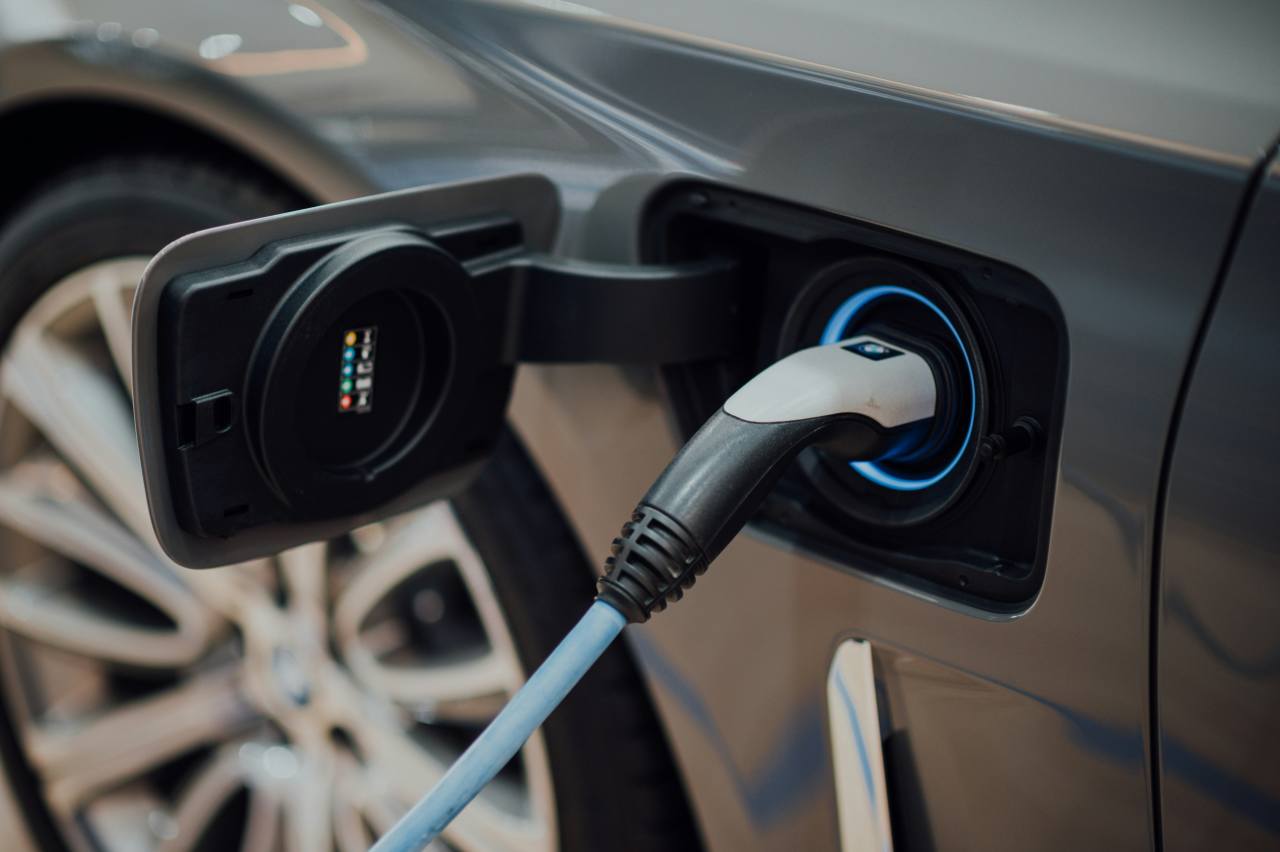

.jpg)
.jpg)
.jpg)
.jpg)
.jpg)
.jpg)
.jpg)
.jpg)
.jpg)
.jpg)
.jpg)
.jpg)
.jpg)
.jpg)
.jpg)
.jpg)
.jpg)
.jpg)
.jpg)
.jpg)
.jpg)
.jpg)
.jpg)
.jpg)
.jpg)
.jpg)
.jpg)
.jpg)
.jpg)
.jpg)
.jpg)
.jpg)
.jpg)
.jpg)
.jpg)
.jpg)
.jpg)
.jpg)
.jpg)
.jpg)
.jpg)
.jpg)
.jpg)
.jpg)
.jpg)
.jpg)
.jpg)
.jpg)
.jpg)
.jpg)
.jpg)
.jpg)
.jpg)
.jpg)
.jpg)
.jpg)
.jpg)
.jpg)
.jpg)
.jpg)
.jpg)
.jpg)
.jpg)
.jpg)
.jpg)
.jpg)
.jpg)
.jpg)
.jpg)
.jpg)
.jpg)
.jpg)
.jpg)
.jpg)
.jpg)
.jpg)
.jpg)
.jpg)
.jpg)
.jpg)
.jpg)
.jpg)
.jpg)
.jpg)
.jpg)
.jpg)


















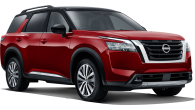







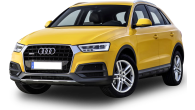
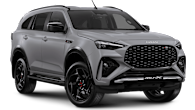











.png)

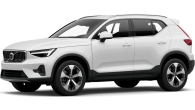


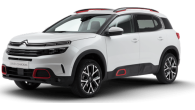



.png)


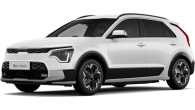

.jpg)

